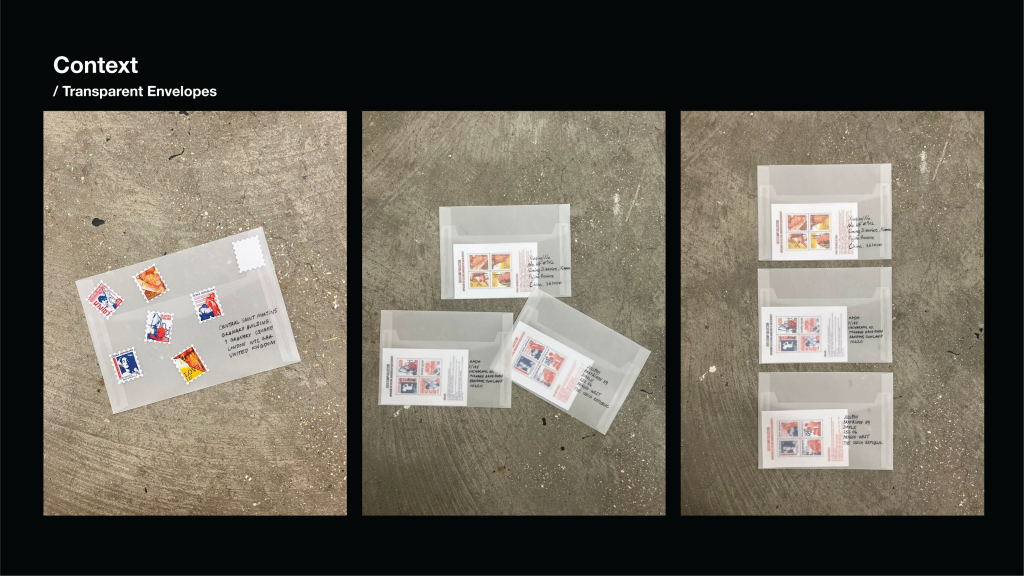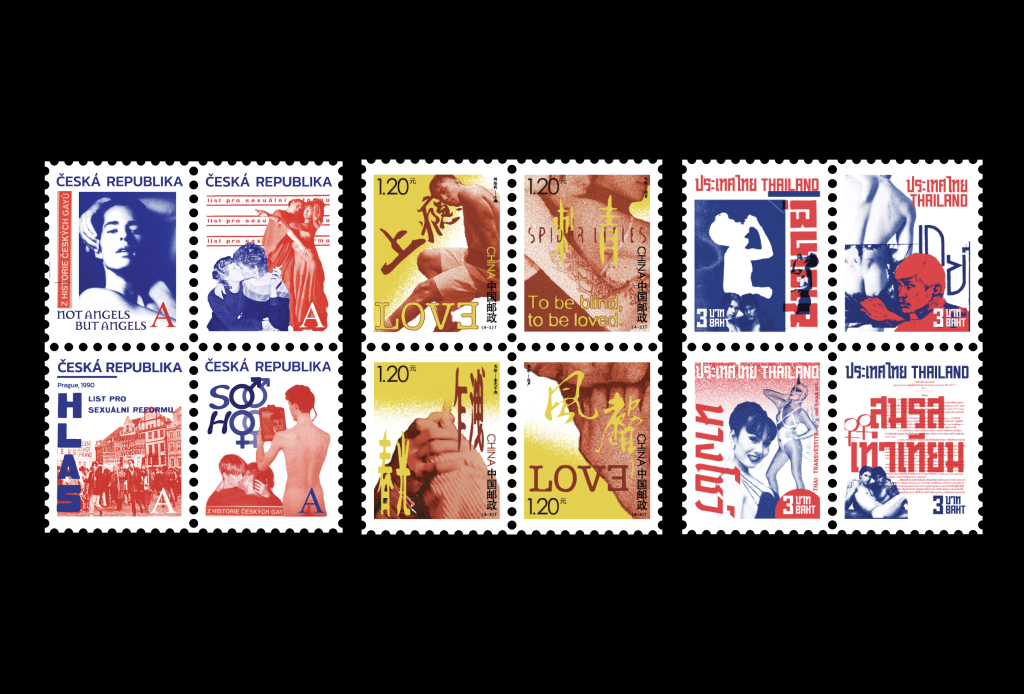WEEK 2
Based on what we developed last week, we decided to design three sets of stamps according to our different positions.

The resources are directly from the archive we have created. Each of us has explored the visualization of this project with different methods: cataloguing, translating, and collaging.
We decided to translate our posters into stamps as our research and brainstorming showed them as a very strong medium with a strong message.
Why using the stamps as a medium?
Stamps are generally perceived as an official and authorised medium. They can be seen as a form of cultural diplomacy and cultural exchange. Stamps are a valuable source of cultural and historical information that can tell us about the values, identities, and political agendas of the societies that create them. As a medium, stamps can communicate across time and space, offering insights into how cultures and nations have represented themselves to the world throughout history.
Our project aims to raise questions about how the position of queer community has been developing throughout different countries and times and how the positions can be changed/shifted further. Its focus is on individual identity and collective cultural narratives.
So developing from last week’s feedback, we decided to consider bringing coherence into this corporative project; we chose one method from last week’s visual experimentations as our main direction for the stamp design.
The colour choices of each set of stamps are inspired by the flags from each country: Thailand, Czech, and China.
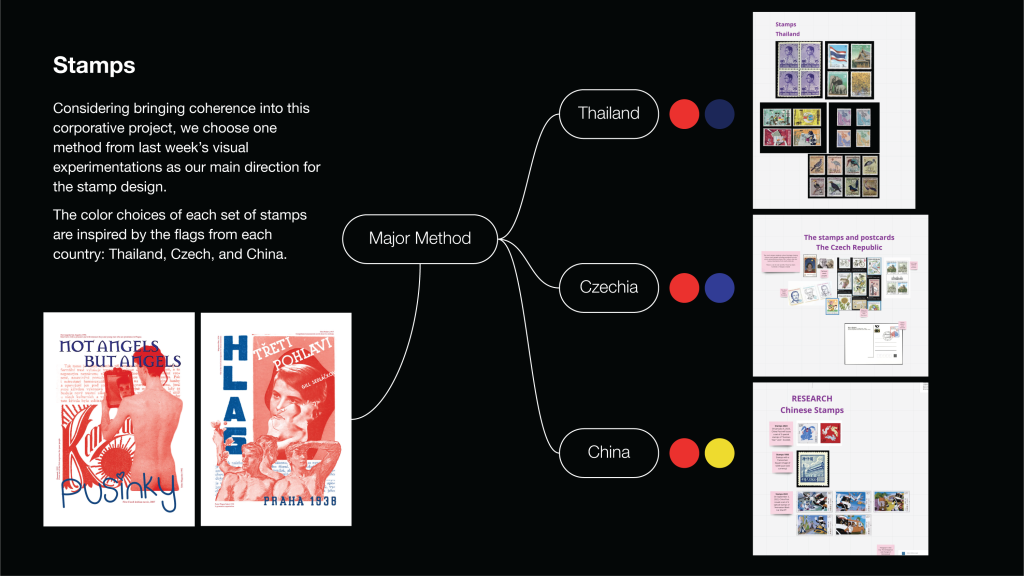
After researching the stamps from our countries, we decided to experiment with creating a set of our own. As our visual exploration last time was based on posters, we had to narrow down the context and make it simpler to keep the idea of fitting to the small stamp size and stay easy to understand. Combining the materials from the archive and our own creativity, we came up with different stamp designs.
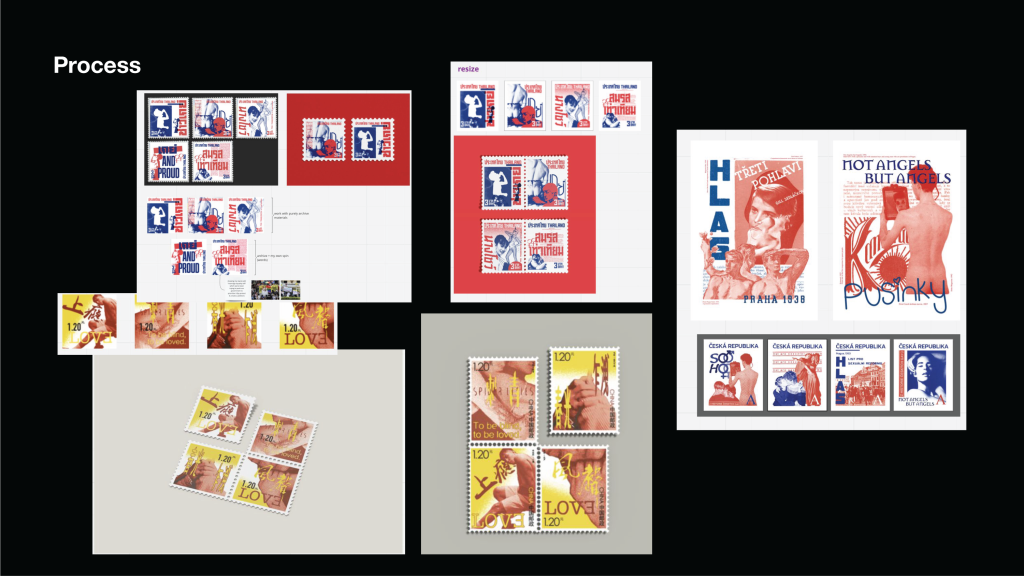
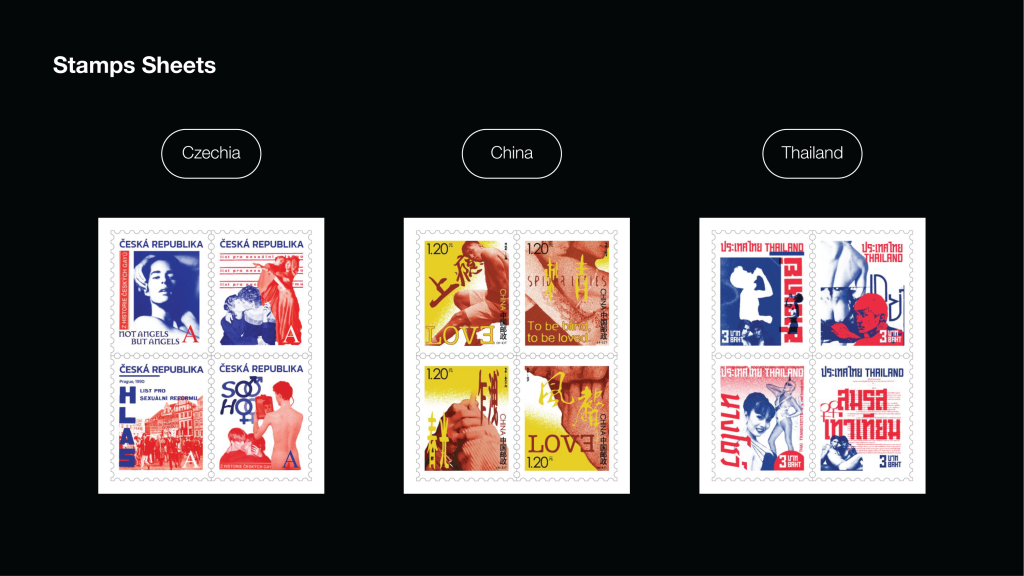
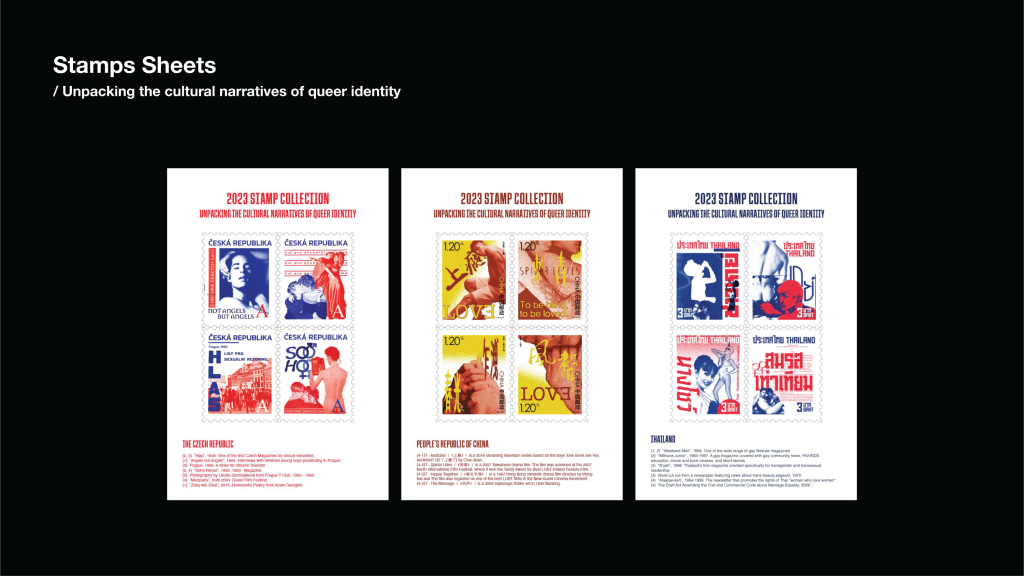
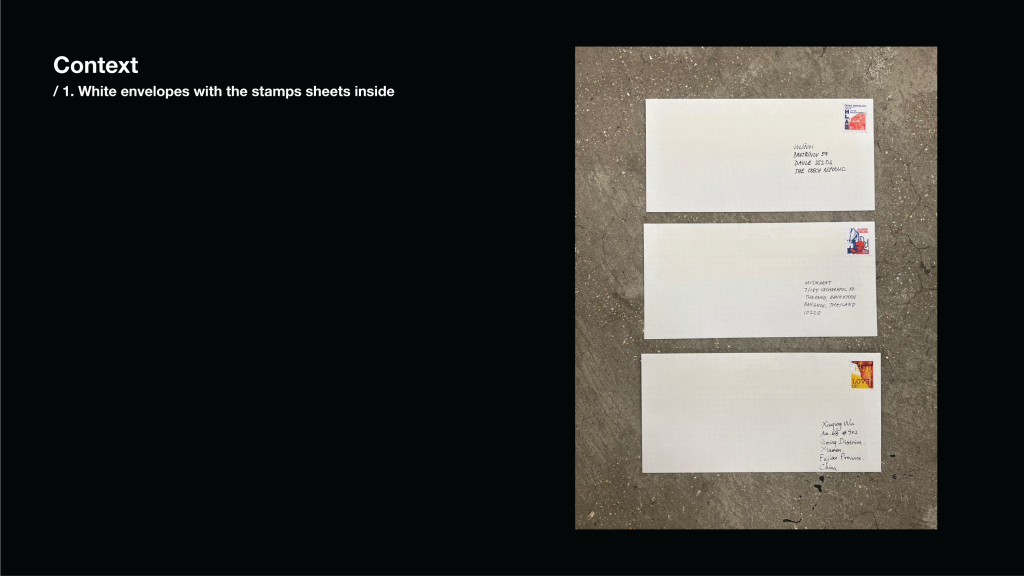
We wanted to show the project more, and we felt this way it was too hidden. We started thinking how to do that, use the envelopes with a transparent window, put it onto the letter and then we came up with the idea of transparent/see-through envelopes.
